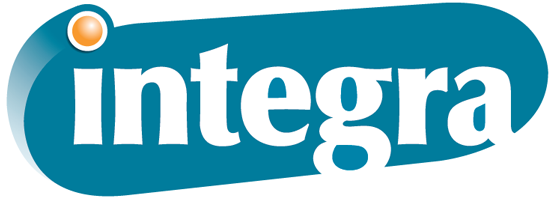Every Door Direct Mail (EDDM) vs Targeted Mailing — Which Is Right for You?
November 4th, 2023 | 6 min read

Are you planning out a direct mail marketing campaign that will target potential customers and hopefully bring in qualified leads? Is the step you're on trying to decide on a mailing strategy? If so, we've got you covered.
Here at Integra, we've taken point on hundreds of direct mail campaigns for companies in just about every industry imaginable, and that has included helping with design work as needed, printing postcards and other mailable pieces, assisting in the mailing strategy, procuring quality mail lists as needed, managing the direct mail sendouts and even helping boost impressions on digital media.
An integral part of the direct mail process is deciding the strategy for who gets your products. You’ll need to do it for every direct mail campaign, and it’ll have to happen early enough in the process that you can design your piece with the plan in mind. Your deployment strategy will largely affect:
- Who your materials will reach
- What the messaging should be
- The amount you need to budget
- How you must address each piece
- What dimensions will be acceptable
- How many people will receive your prints
- Your projected return on investment (ROI)
How? Well, that’s what we’re here to walk you through. You deserve to understand the ins and outs of these two popular direct mail marketing strategies before you spend a single cent on your own campaign. We’ll cover a brief description of EDDM and targeted mailing, provide a few notes on comparing the two, then dive into the specifics and which mail type wins in each segment.
What Is Every Door Direct Mail?
EDDM is a marketing strategy that allows businesses to reach every household in a specific geographic area without needing a mailing list. It's a cost-effective way to target a wide audience and increase brand awareness. With EDDM, you can select specific postal routes, ensuring that your message reaches the right audience.
This strategy is a popular choice for local businesses, restaurants and service providers who want to attract customers in their immediate vicinity. It's especially effective for businesses that rely on foot traffic or have a physical store location. By saturating an entire area with your mailers, you can create a strong local presence and increase the likelihood of attracting potential customers.
What Is Targeted Mailing?
Targeted mailing, on the other hand, is a marketing strategy that involves sending content to a specific target audience based on various demographic factors. Unlike EDDM, targeted mailing requires a mailing list that includes specific addresses or households.
Targeted mailing allows businesses to reach a more specific audience compared to EDDM. By using demographic data such as age, income level or interests, you can narrow down your mailing list and focus on potential customers who are more likely to be interested in your products or services. This approach can result in higher response rates and a more efficient use of your marketing budget.
Comparing the Most Important EDDM and Targeted Mailing Features
Now that you know a little more about the difference between these two major direct mail strategies, you can begin breaking down the pros and cons of each to decide which is best for your business and goals.
Below, we’ve listed the top considerations we believe every print buyer should know before making their decision on these two options. We’ll reveal which option we feel is the “winner” in each category at the end of each section.
Please bear in mind that our breakdown is based on the average plan and results in each situation. There are always ways to lower your direct mail costs even with a more expensive mailing strategy, or make your direct mail prints stand out even if they aren’t addressed to a specific person.
For instance, targeted mailing wins with its filtering options, but you can still target a large number of the perfect potential customers with the right EDDM strategy, proper messaging and a carefully selected route.
With the potential for exceptions in mind, let's dive in.
Reach by Volume
When it comes to targeting options, EDDM will offer a broader reach with a lower expenditure by delivering your mailers to every household in a specific area. This strategy is ideal for businesses that want to increase brand awareness and reach a wide audience, particularly if the commonality that makes for a good customer is location.
In other words, if you’re advertising your new grocery store in a small or medium town, your offers have a great chance of enticing lots of people with different backgrounds and needs — but a local residence in common. You don’t need to know much about your consumers to know they probably buy groceries, so if they’re within easy walking or driving distance to your shop, they’re a potential customer.
You can still reach a large audience with targeted mailing, but you’d do so based on specific customer traits. Perhaps you offer high-end pet boarding services, for example. You still need people to live within a comfortable distance before they qualify as likely customers, but you also need to know that they make a certain amount of expendable income for the “high-end” to work for them. What’s more, you don’t want an entire route worth of residents if only a quarter of them have pets at all. Your reach would narrow as you add these filters, typically resulting in fewer mailed pieces than you’d send with an EDDM route.
Winner: EDDM
Targeting Options
While EDDM often targets more locations in a given region, it may not be as effective if your goal is to target a specific demographic or audience segment. Unless your target has to do with a specific geographic area, you may want to start looking into mail lists and targeted mailing to get your materials into the hands of a more specific crowd.
Targeted mailing provides more precise filtering options. By using demographic data or customer profiling, you can purchase or create a mailing list that specifically targets your ideal customers. Doing so will allow for more personalized and relevant marketing messages, increasing the likelihood of engagement and conversions.
Any targeted mailing strategy is only as good as the mail list backing it up. Make sure you trust the person or business responsible for creating this list and adding household and behavioral data points that filter out bad fits and identify good ones. They should be keeping their data as clean and up to date as possible to help you avoid list-driven problems with your direct mail campaign.
The more filters you add, the fewer people you’ll get. For instance, a city with 500,000 people in it will still turn up a massive mail list if you filter to only residents with children in the home. Add filters related to their annual household income and occupations, just to name a couple of popular options, and you’ll see your list shrink drastically.
Winner: Targeted mailing
Messaging
Technically speaking, you could send an EDDM mail piece out looking exactly the same as you would a targeted piece, assuming the dimensions align with EDDM regulations. The design phase could be the same, especially if your messaging has something to do with your local region.
That said, if you want to target households with specific characteristics, you can get more personalized with targeted mailing without it falling flat. Call out the behaviors and trends your customers relate to that will tie them to your business.
Let’s look at a niche example for the sake of explanation. If you happened to be a furniture supplier specializing in sturdy, high-end shelving for books, you might be able to get mail lists with people who visit the local library and have an above-average annual household income. Granted, your list will probably be fairly small, but your content and business will resonate more readily with those on it. Send that same postcard or catalog out to everyone on an EDDM route, and you’ll cause a lot of head scratches for non-readers who just happen to live along the route.
Winner: Targeted mailing
Cost Comparison
In terms of cost, EDDM is generally more cost-effective compared to targeted mailing. Since EDDM does not require a specific mailing list, you can save on the cost of purchasing or maintaining a targeted list. Additionally, EDDM offers discounted postage rates for bulk mailings, further reducing overall cost.
On the other hand, targeted mailing may require additional expenses for purchasing or maintaining a targeted mailing list. The higher response rates and more targeted audience can potentially result in a higher return on investment (ROI) compared to EDDM, but as far as up-front costs go, you’ll generally pay less for EDDM.
Winner: EDDM
Effectiveness and ROI
The effectiveness and ROI of both EDDM and targeted mailing depend on various factors, including the nature of your business, your target audience and your marketing goals.
EDDM is effective for creating brand awareness and reaching a broad audience in a specified locale. It can be particularly beneficial for businesses that rely on local customers or want to establish a strong local presence. However, it may not be as effective in generating immediate conversions or targeting specific audience segments.
Targeted mailing, on the other hand, offers more precise options and can result in higher response and conversion percentages. It’s suitable for businesses that have a well-defined target audience and want to deliver personalized marketing messages. While it tends to require a higher initial investment in terms of purchasing or maintaining a mailing list, targeted mailing is the way to go if your top priority is response to send ratio.
Winner: Targeted mailing
Choosing Between Targeted Mailing and EDDM Marketing
If you’re about to run your first direct mail marketing campaign, or even if you're thinking about switching from one type of mailing to another, you may have felt confused about the differences before reading this post. Everyone sending something via direct mail wants to have a low cost and a high return, so choosing a route and recipients can feel fraught with potential missteps that can tank a campaign’s ROI and land lots of well-intentioned, well-executed work straight into uninterested customers’ recycling bins.
Now that you know more about the difference between targeted mailing and Every Door Direct Mail routes, you can begin to break down your customer base and decide what makes the most sense. Determine which factors your company values the most in your direct mail efforts, and see which option we’ve listed as the winner in that particular category. If one option stands out as the winner in each part of your “most important” list, your decision is practically made for you.
Ultimately, the best strategy for your marketing campaign depends on your specific business needs, target audience and budget. Analyze your goals and consult with a marketing professional to determine the most effective approach for your business.
You may be in a position now of knowing exactly what type of direct mail campaign you plan to run. If so, it might be time to get your print project started so your content is hot off the press and ready to send. You may already have a professional printer selected, but if not, it might be time to learn about choosing a print company that meets your needs.
Think you might want to work with Integra for your direct mail project? Click below to kick off your print journey!
Topics:


